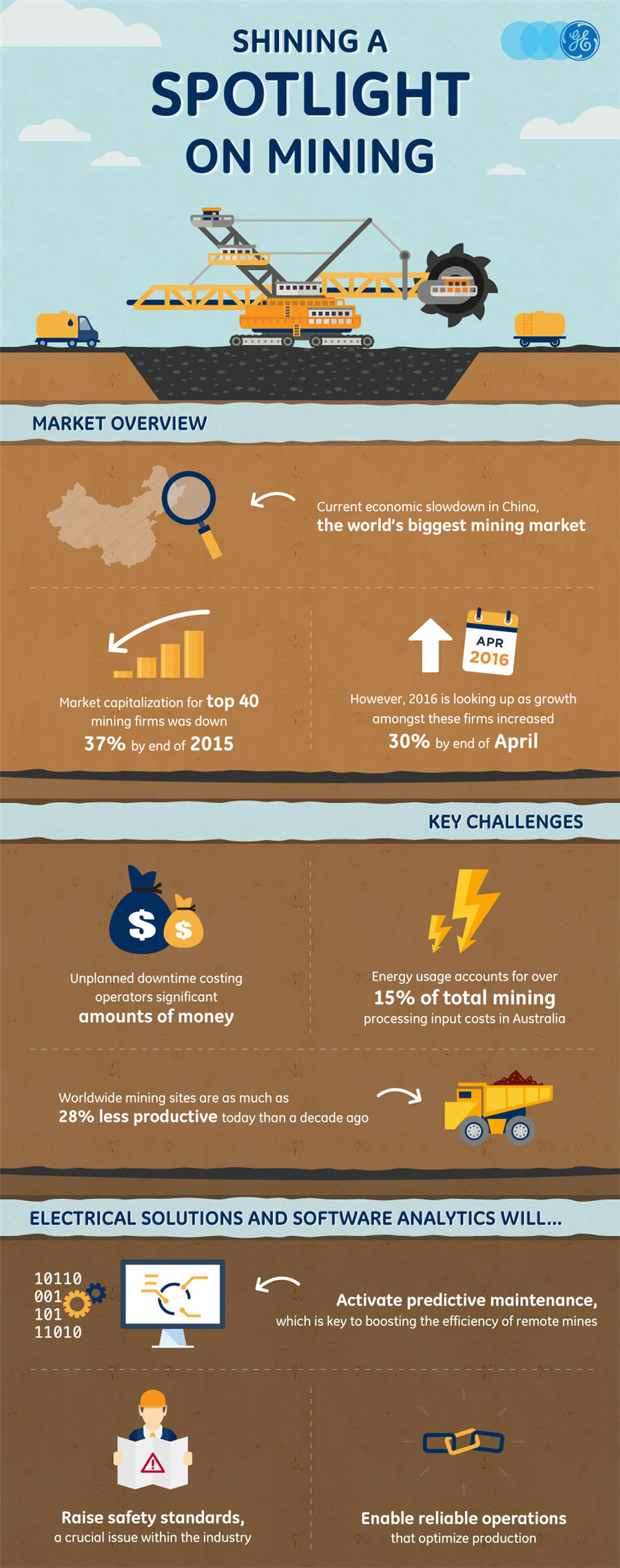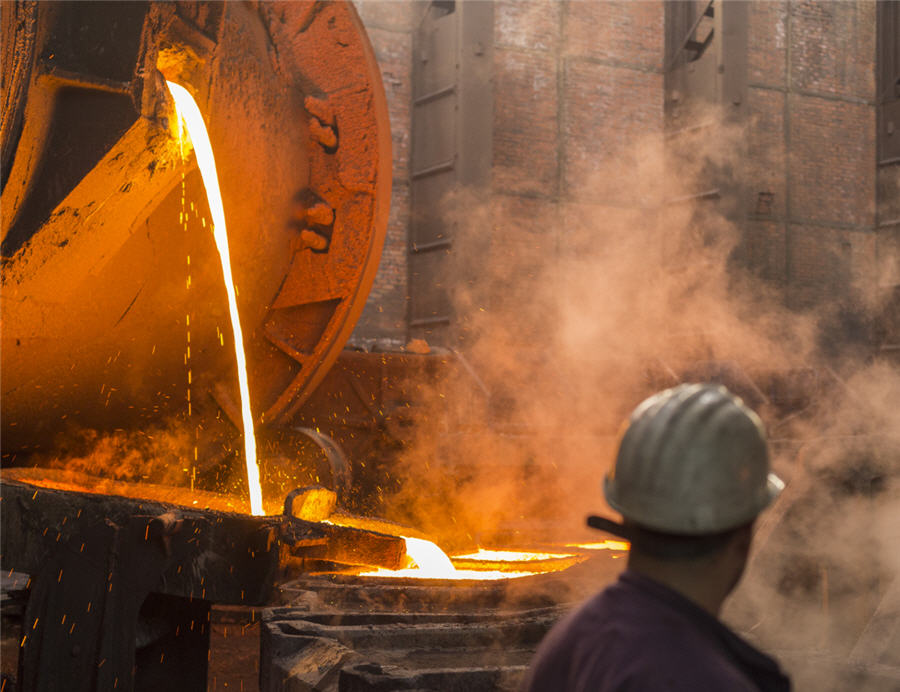Shining a spotlight on mining
Three years ago the mining industry was firmly on the up, with record highs of capital investment. Today, the industry is under somewhat of a black cloud due to the slowdown in economic growth in China (the world’s biggest mining market in terms of demand for mined minerals), a lower demand for bulk commodities and a bleaker global outlook. In fact, the market capitalization for the top 40 mining firms was $494 billion by the end of 2015—a 37 percent drop from 2014 and the lowest levels since the global recession in 2004.
However, as all those working in the sector know, it’s a cyclical market, and what goes down should come back up; particularly in an industry that is producing such critical commodities for construction and energy in particular. In fact, we’ve already seen the market pick up slightly at the start of this year as growth among the top 40 mining firms increased by 30 percent by the end of April. Key to boosting this growth further will be improved approaches to working to create not only cost efficiencies, but also increase the safety and reliability of operations.
Taking a different approach to operations
For hundreds of years now, electrification has continued to fundamentally change every aspect of our lives. From a fully electrified home to the growth of civilized cities and electric modes of transport, it is the symbol of the modern society. While electrification is not a new concept for the mining industry, mechanical solutions still dominate the marketplace. However, mining operators today face very different challenges and expectations compared to a few decades ago, and methods of working need to advance and evolve to meet these.
Today, the pressure is on for sustainable, energy-efficient, reliable, safe and continual operations. And when you consider the remote areas that mines are often based in, this is no mean feat. The current economic challenges are also adding further cost pressures.
Across the world, regional energy shortages have also compelled some mines to sharply curtail their power consumption. This comes as no surprise as mining involves a diverse range of energy intensive processes such as excavation, material transfer, mineral preparation and separation. In fact, for example in Australia, energy costs currently constitute as much as 15 percent of total mining and mineral processing input costs. Mining companies must therefore look at cutting these costs by, among other things, using more efficient electrical equipment to ease this energy demand—and to meet the industry energy reduction targets made by many governments globally.
While technology developments are facilitating the introduction of energy efficiency measures within mining, the sector as a whole is also seeking to establish consistently reliable operations that optimize production. Electrical solutions are not only key to this, but also to raising safety standards and unlocking revenues. For example, by moving away from multiple geared powertrains to single high-power direct-drive powertrains, operators will increase reliability, productivity and powertrain efficiency. This is because there is only one set of equipment needed to install and to feed single high power gearless drive stations. This leads to less room for failure and offers space saving benefits, which is crucial for underground installations where real estate is a premium.
Understanding the challenges faced by mining operators, GE has been developing, installing and maintaining electrical solutions for the mining industry for over eight decades. Just one example is GE’s high-performance direct-drive induction motor coupled with pulse width modulation (PWM) voltage source inverter (VSI) technology, which has been designed to provide a more dynamic response for smoother handling and control. Its direct-drive design—removing both brush gear and gearbox, often the reason for machine failure—offers greater availability. The induction motor not only has fewer parts, but it is more rugged in construction and thus more reliable than a synchronous or DC motor, which requires less maintenance—a key aspect given the remote location of mines.
The vast potential of digital
As mines continue to go deeper, operators need to use more powerful technology to increase efficiencies and productivity. The strains and stresses placed upon mining equipment by rocks of unpredictable size and hardness often result in recurrent breakdowns. In fact, worldwide mining sites are as much as 28 percent less productive today than a decade ago. And this is not good news for operators, especially as high productivity is crucial to boosting margins.
While this unplanned downtime can cost mining operators serious money, there are ways that operators can avoid this. Using digital industrial technologies, which can monitor the state and performance of mining hardware in real time, means operators can diagnose and fix impending equipment failures before they happen, leading to significant cost savings and boosting productivity and efficiencies in the future.
The adoption of digital solutions is not yet widespread throughout the sector, but the reliability and efficiency of operations depends on operators effectively gauging and controlling all aspects of their production, so this is set to change. Through using digital technologies to accelerate and simplify access to information, which alert operators to potential problems and offer a real time, big-picture view of the whole mining value chain in action, operators can reduce maintenance, increase product life cycles, boost reliability and increase safety.
While the outlook is currently looking a little murky, mining is a cyclical market. and attention must turn to the next wave of electrical and digital initiatives, which will not only improve operations today, but lead to longer-term benefits.

More News
UBS tells investors to buy silver amid Trump tariff turmoil
Silver is currently trading at $30.25 per ounce.
April 09, 2025 | 09:35 am
China’s copper smelters rue Beijing’s curbs on US raw materials
China’s swift retaliation in matching Washington’s blanket 34% levies is likely to bring US shipments of copper scrap to a halt from next month.
April 09, 2025 | 09:35 am
Alphamin to resume Congo tin mine, shares rally
Alphamin said the insurgents have now withdrawn eastward, and the company will initiate a phased resumption of operations.
April 09, 2025 | 09:18 am
{{ commodity.name }}
{{ post.title }}
{{ post.excerpt }}
{{ post.date }}




Comments